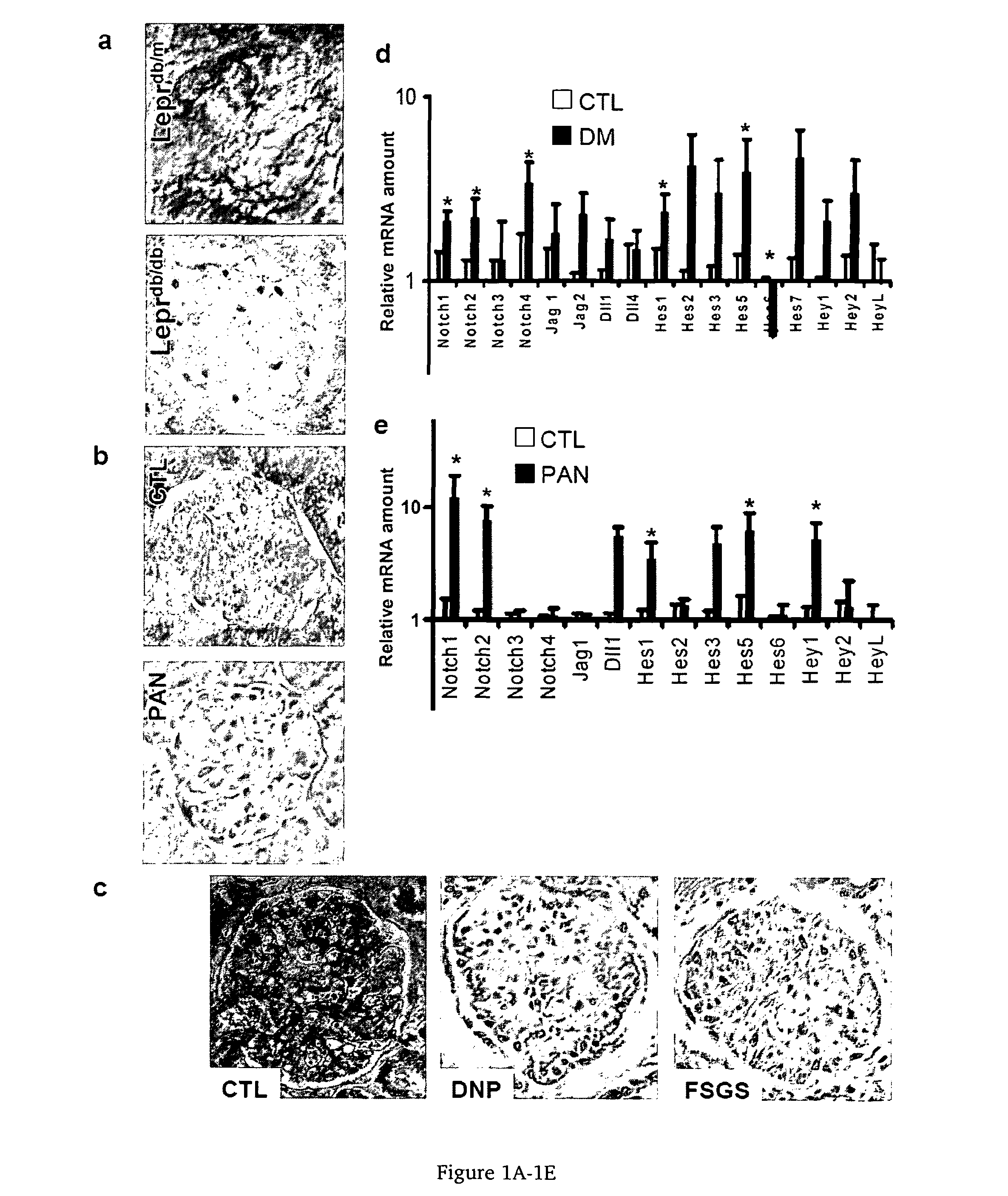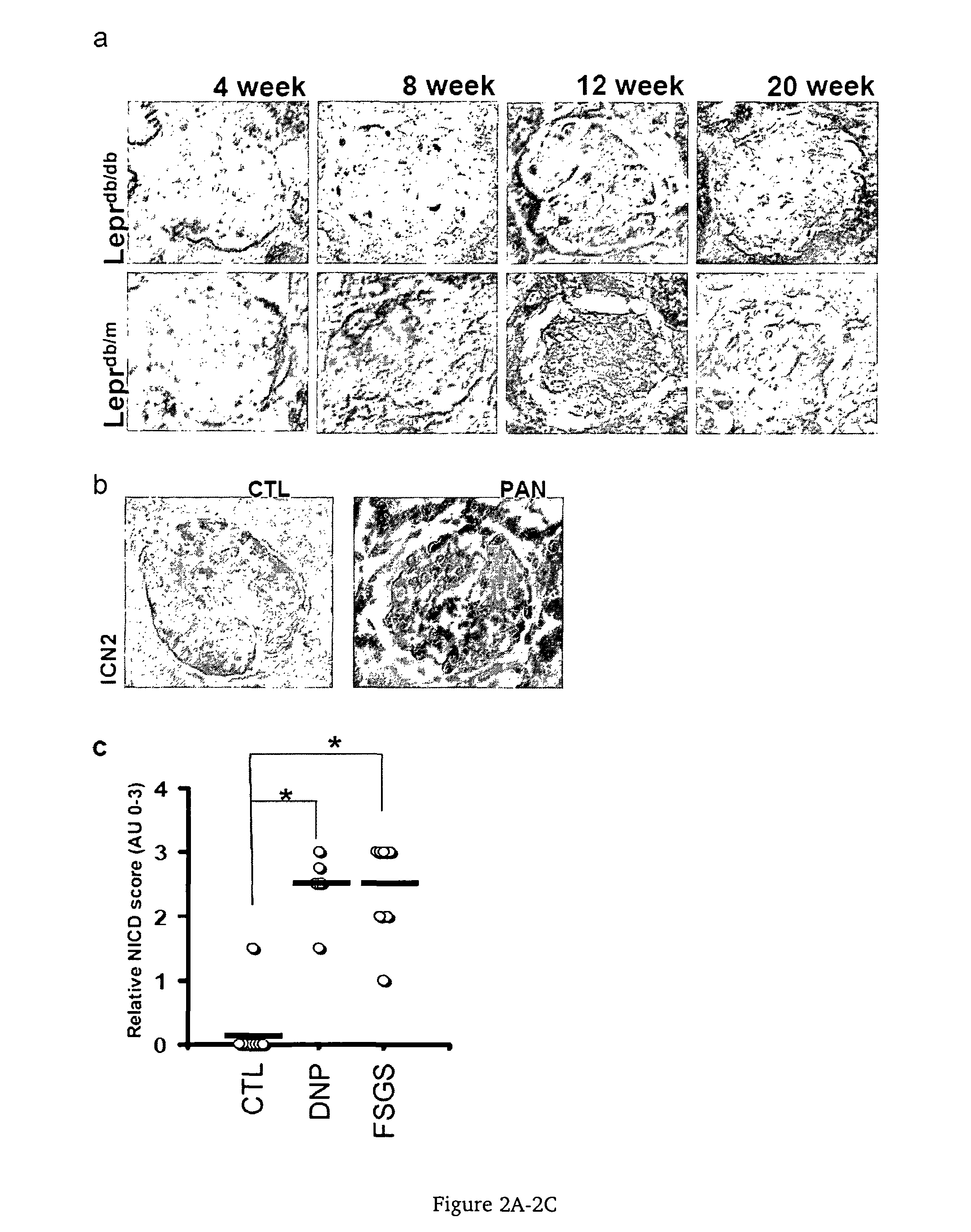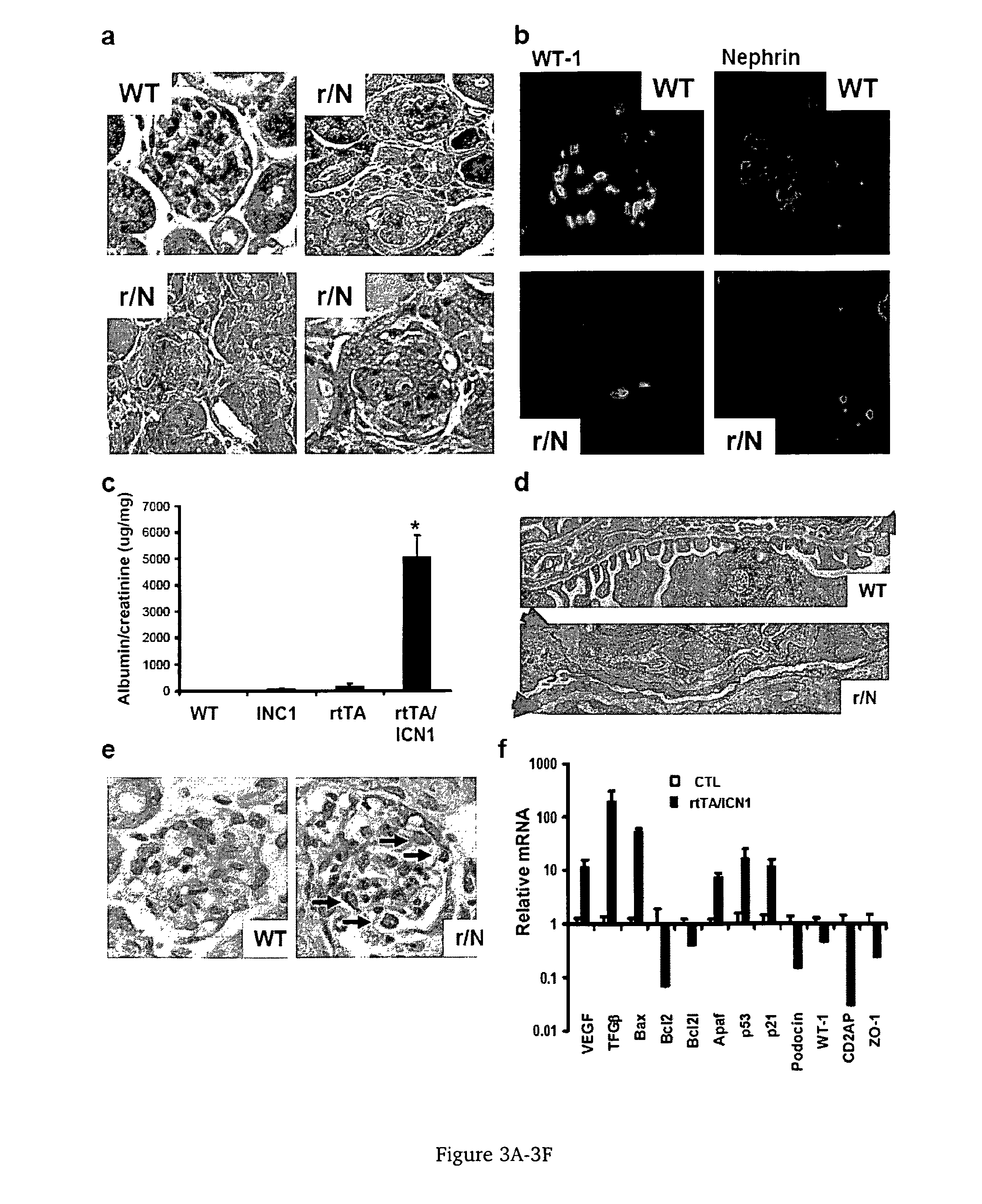Use of gamma secretase inhibitors and notch pathway inhibitors for treatment and prevention of renal disease
a technology of notch pathway and gamma secretase, which is applied in the direction of animal repellents, drug compositions, peptide/protein ingredients, etc., can solve the problems of decreased cell density, subsequent translocation, and inability to know whether podocyte loss or dysfunction protection would influence glomerular disease development, etc., to achieve the effect of treating or preventing renal diseas
- Summary
- Abstract
- Description
- Claims
- Application Information
AI Technical Summary
Benefits of technology
Problems solved by technology
Method used
Image
Examples
example 1
Glomerular Disease
Overview
[0060]Genes in the Notch pathway were shown to be re-expressed in podocytes in humans and animal models of DNP and FSGS. The expression of ICN1 in podocytes leads apoptosis, in vivo and in vitro and the development of albuminuria and glomerulosclerosis in vivo. Conversely, genetic deletion of Notch transcriptional binding partner (Rbpj) selectively in podocytes or pharmacological inhibition of Notch cleavage (by a γ-secretase inhibitor administration) prevents from podocyte apoptosis and the development of albuminuria. The results indicate that reactivation of the Notch pathway in podocytes plays an important role in the development of glomerular disease and represents a novel pharmacological target. The role of Notch in tubular disease is addressed in Example II.
Materials and Methods
[0061]Reagents. DBZ was purchased from Calbiochem and later custom synthesized by Syncom (Groningen, Netherlands). Recombinant (carrier free) VEGF and TGFβ were purchased from ...
example ii
Tubulointerstitial Fibrosis
[0099]The Notch pathway is important in the development of podocytes and proximal tubules. As opposed to the glomerular podocytes, proximal tubular epithelial cells fully regenerate after toxic / ischemic renal damage. Although the exact mechanism of tubular regeneration is not fully clear, one suggested mechanism could include re-activation of the developmental pathway including Notch and wnt. The present Example indicates that the Notch signaling plays a role in the regeneration phase after tubular injury when other developmental genes are known to be re-activated (Pax-2, Wnt4).
[0100]Sparse expression of active Notch1 and 2 was observed in the tubules of normal healthy adult rodent and human kidneys, consistent with the notion that these are renal progenitor cells. Experiments were conducted using the murine folic acid (FA)-induced nephrotoxicity model, which is characterized by acute tubular injury followed by both tubular regeneration and chronic changes...
PUM
| Property | Measurement | Unit |
|---|---|---|
| diameter | aaaaa | aaaaa |
| diameter | aaaaa | aaaaa |
| diameter | aaaaa | aaaaa |
Abstract
Description
Claims
Application Information
 Login to View More
Login to View More - R&D
- Intellectual Property
- Life Sciences
- Materials
- Tech Scout
- Unparalleled Data Quality
- Higher Quality Content
- 60% Fewer Hallucinations
Browse by: Latest US Patents, China's latest patents, Technical Efficacy Thesaurus, Application Domain, Technology Topic, Popular Technical Reports.
© 2025 PatSnap. All rights reserved.Legal|Privacy policy|Modern Slavery Act Transparency Statement|Sitemap|About US| Contact US: help@patsnap.com



